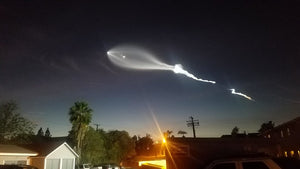November- Saturn Fades, Meteors Blaze +Triangulum Galaxy
Saturn’s Rings: The Vanishing Act
Saturn, the solar system’s crown jewel, usually dazzles with its expansive, glittering rings. Yet every 15 years, the cosmos offers a subtle trick: the rings nearly vanish. This happens when Earth crosses Saturn’s orbital plane, making the rings appear edge-on and razor-thin, almost invisible to the observer.
The exact alignment occurred on March 23rd, but Saturn was too close to the Sun for safe viewing. Now, on November 23rd, skywatchers get a rare encore. Under the night sky, the rings will shrink to a whisper, visible only through larger amateur telescopes. Their faint outline will shimmer like a ghostly silhouette, a haunting reminder of the delicate dance of planets and orbital mechanics.
For one night, Saturn sheds its usual grandeur, revealing a fragile and fleeting side of the solar system that most never see—a cosmic secret whispered across the void of space.
The Leonid Meteor Shower
As the chill of mid-November settles in, the Leonids make their quiet return, streaking through the heavens like whispers of fire. On the night of November 16th and into the early hours of the 17th, look toward the constellation Leo and you might catch these fleeting cosmic embers—remnants of Comet Tempel-Tuttle’s ancient tail. The Leonids aren’t the flashiest of meteor shows, rarely exceeding 15 per hour, but this year, fortune favors the patient. With a waning crescent Moon keeping its light at bay, the skies will be dark enough for the vigilant stargazer to witness nature’s subtle fireworks—silent messengers tracing Earth’s passage through a trail of celestial dust.
Messier 33 – The Triangulum Galaxy
Often overlooked between its grander neighbors, M33 is a subtle masterpiece of the deep sky. To the unaided eye, it’s barely a whisper—best found under dark, moonless skies. Through binoculars, it reveals itself as a faint, ghostly oval adrift in Triangulum, and in larger telescopes, its delicate spiral arms begin to emerge like smoke rings of ancient starlight. Though tricky for visual observers, M33 rewards the patient and the equipped: astrophotographers can capture its sprawling star-forming regions and intricate tendrils of dust with breathtaking detail. It’s a reminder that some of the universe’s most beautiful wonders don’t shout for attention—they shimmer quietly, waiting for those who truly look.







